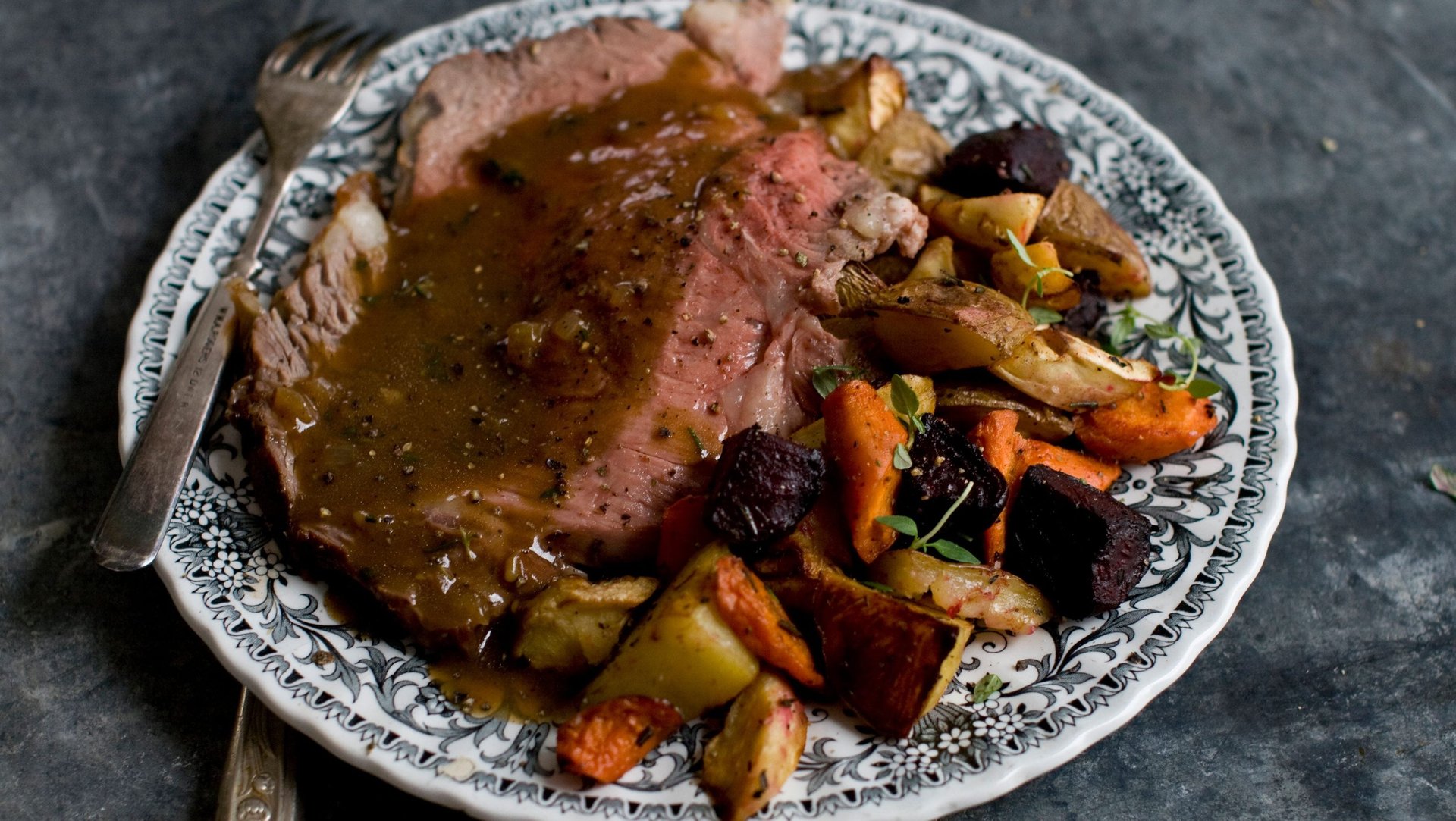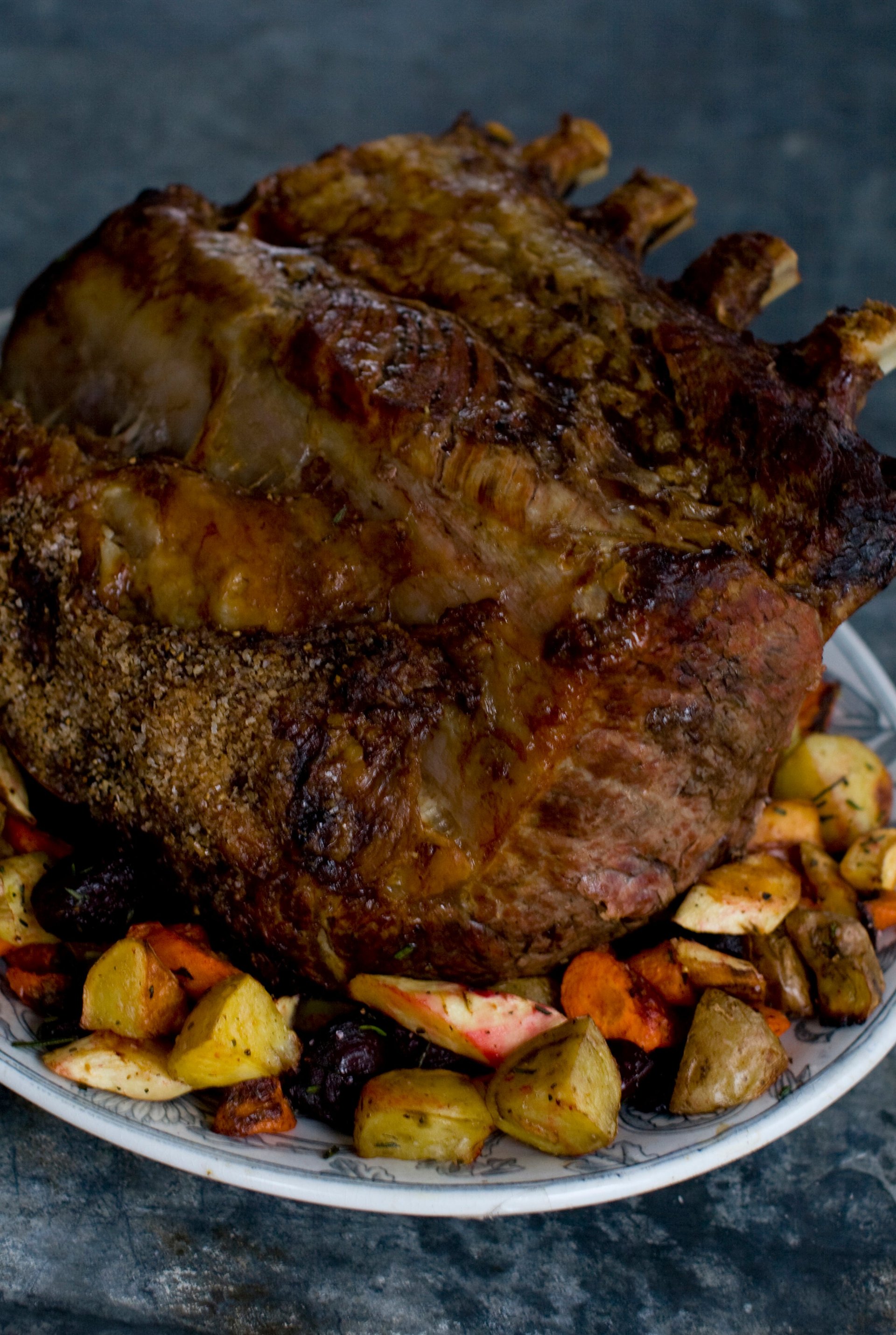How to avoid ruining your $150 prime rib roast
There’s a reason that turkey and ham are so often at the center of family holiday celebrations—they’re relatively inexpensive and fairly simple to cook well. Prime rib, or a rib roast as it’s also known, is neither of those things. Purchased from a specialty butcher, a 5-lb piece of meat can easily run well over $100, and even from the grocery store the price is usually north of $10 a pound.


There’s a reason that turkey and ham are so often at the center of family holiday celebrations—they’re relatively inexpensive and fairly simple to cook well. Prime rib, or a rib roast as it’s also known, is neither of those things. Purchased from a specialty butcher, a 5-lb piece of meat can easily run well over $100, and even from the grocery store the price is usually north of $10 a pound.
It’s also notoriously tricky to cook. If the white meat on your turkey is a little dry, you just douse it with more gravy or throw it into soup, or slather more mayonnaise onto your Thanksgiving-leftovers sandwich—it really doesn’t make a ton of difference. A perfect rib roast, though, is deliciously browned and crusty on the outside, and juicy pink on the inside. While it can take hours to slow roast, a small amount of time at the end can make the difference between a perfectly medium-rare roast and one that lands on the grayer side of medium.
But don’t abandon your plan to serve prime rib and Yorkshire pudding for Christmas dinner. The challenges it poses in the cooking process can be overcome with a little bit of know-how and a $30 gadget you’ll be glad to own.

With prime rib, temperature is everything
One of the biggest questions with a rib roast is how long it should cook and at what temperature. There are different opinions out there, but several of the cooks I trust the most (J. Kenji López-Alt of Serious Eats, Bridget Lancaster from America’s Test Kitchen, and Tom Mylan—my husband, a prime rib lover, butcher, and author of The Meat Hook Meat Book) all go in for a low oven, something like 200°F (93°C). If you’re going to cook prime rib, I highly recommend you read López-Alt’s beyond-comprehensive guide to how and why to cook it, and watch the accompanying video, before you begin.
Whether you use his recipe, a family standby, or one from a book you love, the internal temperature of the meat is key. You want the middle of the thickest part of the roast to reach 120-125°F for rare, 130°F for medium-rare. If you worry about missing this window—maybe you’re expecting guests, anticipating building an elaborate Lego creation, or like to enjoy a glass of champagne on Christmas morning—get a wireless meat thermometer with an alarm function. For about $30, you can purchase peace of mind that you won’t overcook $150 worth of beef. Just put the probe in the roast, then set it for the desired temperature, and the base of the unit will beep when it’s done—no need to check the oven, no guessing.
Tom told me that the biggest thing to remember is to insert the probe in the middle, in between two ribs in the center of the roast. Make sure the tip is in the center of the muscle, not next to the bone, which will skew the reading. Then, take it out about 5-10°F lower than your desired end temperature. “The fat and the bone are heat sinks and the internal temperature will continue to rise while it rests,” he said. “It’s called carryover cooking.” So for a rare roast, set your thermometer for 115-120°F. This is especially true if you’re going to do the López-Alt technique—the reverse sear—where you let the meat rest, then sear it in a very hot oven just before serving.
Use the proper pan
One of the most important qualities of a rib roast is its delicious fat, which will render and mingle with beef juices during the cooking process. If you use a giant roasting pan for a smaller roast, you may miss out. “If the tin is too big, the juices released during roasting will spread out over the surface area of the tin and burn,” write Pat Wheelan and Katy McGuinness in The Irish Beef Book. “You want to contain them so they are not wasted and will contribute to a flavoursome gravy.”
Don’t press a single-use aluminum pan into service for a prime rib, either. It makes stove-top gravy difficult, and it can buckle and fold in the oven.
Let it rest
When you plan out your prime rib, make sure to take it out of the refrigerator several hours before you intend to put it in the oven. It will cook more evenly this way, and the cooking times and temperatures will match your recipe more closely. And, you must let the roast rest when it comes out of the oven. It doesn’t matter if dinner is running late. Pour another round of drinks, refresh the crackers and cheese. Prime rib is worth waiting for.